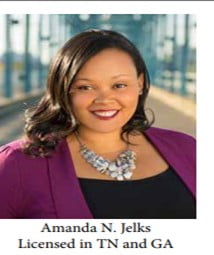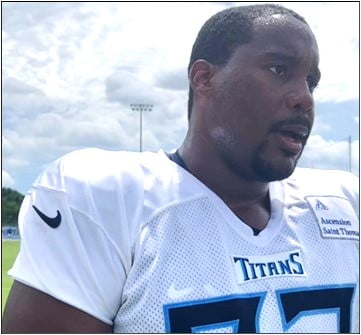Hamilton County District Attorney Cody Wamp released video footage on Sunday showing the confrontation between Roger Heard Jr. and Chattanooga police officers that led to Heard’s death.
Concerned citizens filled the City Council chambers last Tuesday night, demanding answers about the death of Heard, who was shot multiple times by police on August 11 at the Speedway gas station on Third Street. The crowd grew increasingly frustrated when Councilwoman Jenny Hill, who represents District 2 and is the council’s vice chair, told speaker Yolandra Porter that the council was “not in a situation to do a back-and-forth tonight.” Porter responded, “So what’s the use of us coming to the podium if you’re not going to give us no feedback?”

In a show of solidarity, the majority of attendees walked out of the meeting following Hill’s remarks and gathered on the steps of City Hall to protest the city officials’ lack of satisfactory explanations.
The three police officers involved in Heard’s shooting have been placed on paid administrative leave, in accordance with department policy. Officer Celtain Batterson, a nine-year veteran of the department, was wounded in the gunfire and is currently on leave. Additionally, Officers Nicholas Ayres and Christopher Dyess, with five and two years of experience respectively, have been placed on leave.
DA Wamp labeled Heard as a “violent felon, a known drug dealer, and a gang member, serving time in federal prison for being a felon in possession of a firearm and had felony convictions out of Hamilton and Bradley Counties.”
Heard had outstanding felony warrants at the time of the shooting, she said.
“As the video shows, Heard was purposefully traveling in the direction of Batterson, and still armed, when he was met with gunfire from Batterson and other law enforcement officers,” the statement released by Wamp on Sunday reads. “Heard had a large amount of cash on his person, approximately one pound of marijuana in his vehicle, and the firearm he had used to shoot Investigator Batterson was stolen in Chattanooga in 2022. Because he was a convicted and violent felon, it was unlawful for Heard to be in possession of any type of firearm. On the night of August 11, 2023, Heard was committing a litany of felony offenses, all of which are overshadowed by his attempt to gun down a law enforcement officer at point blank range.”
Chattanooga NAACP President the Rev. Ann J. Pierre said in a statement that the NAACP respects the grieving period of Heard’s family and has no comment on the released video. However, the organization renewed its call for the public release of all information related to the incident.
“The Chattanooga Hamilton County Branch of the NAACP recognizes the pain of the family as they viewed the video showing issues leading to Mr. Heard’s death,” Rev. Pierre said in the statement. “Therefore, we respect the grieving period of the family and have no comment on the released video. We realize that a portion of the video was shared with the community on Sunday, August 20, 2023. Regretfully, as of this time, the total video from the Speedway, nor the police video and audio or live stream from other sources in police custody has been released. As we continue to gather facts and other contextual information pertaining to this incident, we are renewing our call for the public release of the vital information. Complete closure will not exist until all information is made available to the family and the public taxpayers. Let us remember the Heard family in our prayers.”
Wamp said there won’t be any body camera video because there isn’t any to release.
“It is not CPD (Chattanooga Police Department) protocol for investigators to be equipped with body worn cameras; therefore, no body worn camera was able to capture the attempted murder of Investigator Batterson,” she said.
Chattanooga Mayor Tim Kelly released the following statement, in part, regarding the officer involved shooting of Heard:
“What happened last week was a terrible incident for everyone involved: Our community, our wounded officer, our police family, and the family and loved ones of Roger Heard, Jr.
When officer-involved shootings like these happen, best practice is to have an outside entity conduct an objective review so that the community can have full faith and confidence in the findings. That process is intentional, and it is good. By having an unbiased third party (in this case, the Tennessee Bureau of Investigation (TBI), which is a state-level law enforcement agency) reconstruct the details surrounding such an event, the public can be confident that the findings will be fact-based.
As the TBI conducts its independent probe into what exactly happened, I am asking for your patience, and I am asking that you not jump to conclusions. TBI agents are working diligently and impartially to determine the series of events that led to the exchange of gunfire. All of the facts will soon come to light.
Officer Celtain Batterson only yesterday underwent an intensive surgery and has not yet been interviewed by investigators. That interview is critical to the TBI investigation. At the same time, we understand the family and friends of the deceased are grappling with new grief at the loss of a loved one.

The frustration we saw and heard Tuesday night at City Council and on the steps of City Hall was clear and consistent with much of what I heard through the course of my campaign: We are working hard to build trust between our police department and the community. Chief Celeste Murphy’s demonstrated commitment to community policing was a major factor in my decision to hire her, and I have full confidence in her ability to help us navigate difficult situations like these.
We all want the questions to be answered comprehensively and fairly, not hastily. The agencies involved are working to do that, and at the proper time all of the information related to this incident will be readily available.” Chattanooga Police Chief Celeste Murphy offered her condolences to Heard’s family and friends.
“This is a terribly tragic incident for a lot of people,” she said. “It’s tragic for the Chattanooga Police Department, the officer who was wounded and other officers who responded to the scene, certainly the family and friends of the man who lost his life, for people who were nearby at the time, and for people hearing and reading about it now.”













